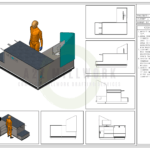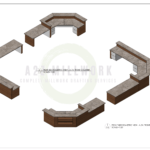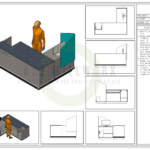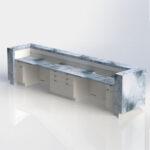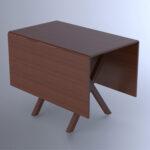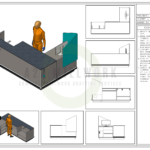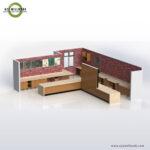Switching to Microvellum software has been a topic of interest for many millwork professionals seeking efficiency, precision, and scalability. With the USA market’s ever-growing demand for custom millwork, cabinetry, and architectural woodworking solutions, it’s important to evaluate whether Microvellum is a good fit for your business. In this article, we’ll walk through what makes this software stand out, its benefits, and key factors that can help you decide if transitioning to Microvellum is truly worth it.
What is Microvellum Software?
Microvellum is a design-to-manufacturing software specifically created for the millwork industry. Unlike generic 3D modeling tools, Microvellum integrates AutoCAD-based drafting capabilities with production-oriented tools like CNC machine compatibility, nested-based cutting, and automated section drawings.
The software is ideal for both residential and commercial millwork projects, covering everything from cabinetry to architectural elements. With Microvellum, users benefit from high-level modeling, realistic rendering, detailed cutlists, and optimized workflow management.
Top Benefits of Microvellum Software
1. Seamless 3D Modeling and Realistic Rendering
Microvellum enables millwork designers to create lifelike 3D models that can reflect real-world scenarios. This allows businesses to provide clients with highly realistic previews of cabinetry and interior design concepts, helping to eliminate misunderstandings and costly revisions.
- Impact: Lifelike renderings ensure your clients understand exactly what to expect before production begins.
- Advantage: Real-time design alterations make collaboration easy during the planning phase.
2. Automated Section and Assembly Drawings
Microvellum automatically generates sectional and assembly views from your 3D models, saving significant time. This feature ensures that every millwork component is documented to comply with AWI standards (Architectural Woodwork Institute).
- Why It Matters: Reduces human errors during production and ensures precise alignment between design and fabrication.
- Unique Edge: The automation feature eliminates drafting bottlenecks, providing smoother project timelines.
Is Microvellum the Right Fit for Your Business?
1. For High-Volume Commercial Projects
Microvellum offers the ability to handle large-scale commercial millwork projects with multiple design revisions and approvals. For companies managing complex retail or office interior designs, the software ensures seamless communication between architects, designers, and manufacturers.
- Example: In retail environments, custom cabinetry often requires quick turnarounds. Microvellum’s automated processes reduce manual drafting errors and meet tight deadlines.
Cost Efficiency and Productivity Gains with Microvellum
1. Cutlist and Bill of Materials Automation
One of the standout features of Microvellum is the generation of detailed cutlists and bills of materials. This feature ensures that every piece, from panels to hardware accessories, is accounted for accurately.
- Outcome: Improved material management and reduction in waste.
- Industry Relevance: This feature is crucial for both residential and commercial millwork, offering transparency during procurement.
2. Nesting Optimization for Minimal Waste
Microvellum excels at optimizing material usage by nesting parts efficiently according to grain direction. The software even provides waste reports to enhance sustainability efforts.
- Benefit: Reduced material costs and improved sustainability by minimizing waste.
- Added Feature: Integration with CNC machines for accurate production.
How Microvellum Outperforms Traditional Software
Traditional software tools like AutoCAD or Cabinet Vision offer excellent design capabilities, but Microvellum provides a complete solution by bridging the gap between design and production. Its ability to manage architectural and manufacturing workflows from one platform makes it a game-changer.
- Design Flexibility: Shape and size alterations are easy to implement, providing greater customization.
- Full Integration: From architectural planning to CNC machine production, Microvellum simplifies the entire workflow.
Training and Skill Development Opportunities
Transitioning to Microvellum may initially require time and resources for employee training. However, once users become proficient, the software boosts productivity and enhances project management capabilities.
Many businesses offer hands-on Microvellum training to new employees, ensuring they can make the most of the software’s capabilities from the start. Investing in training translates into long-term cost savings and greater efficiency.
Challenges to Consider Before Switching
While Microvellum offers many benefits, there are a few challenges to keep in mind:
- Learning Curve: Training and onboarding may take time, especially for teams unfamiliar with CAD-based software.
- Software Costs: Microvellum’s licensing fees may be higher than other software options, making it an investment decision.
- Hardware Requirements: The software requires robust systems to handle complex designs and large-scale projects.
Key Industries Benefiting from Microvellum
- Residential Millwork: Custom cabinetry for kitchens and living spaces benefits from Microvellum’s 3D modeling and material optimization.
- Commercial Millwork: Retail spaces, office interiors, and hotels utilize the software for quick and accurate production.
- Architectural Firms: Microvellum aids in creating intricate architectural elements with precision, meeting design standards effortlessly.
Why Making the Switch is Worth It
Transitioning to Microvellum offers businesses several unique advantages:
- Reduced Errors: Automation of section and assembly drawings ensures fewer production mistakes.
- Client Satisfaction: Lifelike renderings and real-time changes lead to better client communication and fewer project revisions.
- Material Savings: Optimized nesting reduces material waste, aligning with sustainable practices.
- Complete Workflow Integration: From design to manufacturing, Microvellum supports every phase, enhancing overall productivity.
For businesses focused on both residential and commercial millwork, switching to Microvellum is an investment that ensures precision, scalability, and enhanced client satisfaction.
Conclusion: Is It Really Worth Switching to Microvellum?
In today’s competitive millwork industry, businesses need tools that streamline processes, reduce costs, and enhance customer experiences. Microvellum stands out as a complete design-to-production solution, offering everything from 3D modeling to automated cutlists and CNC-ready drawings. While the software comes with a learning curve and upfront costs, its long-term benefits far outweigh the initial investment.
At A2Z Millwork Design LLC, we recognize the importance of precision and efficiency in millwork projects. Our team provides Microvellum Residential Shop Drawings and Microvellum Commercial Shop Drawings to help clients across the USA streamline their design and production processes. We ensure that every project meets the highest industry standards while staying on budget and schedule.
Whether you’re working on custom cabinetry for a home or commercial millwork for a retail space, Microvellum can elevate your business operations. Switching to Microvellum isn’t just worth it—it’s a game-changer for modern millwork projects.


